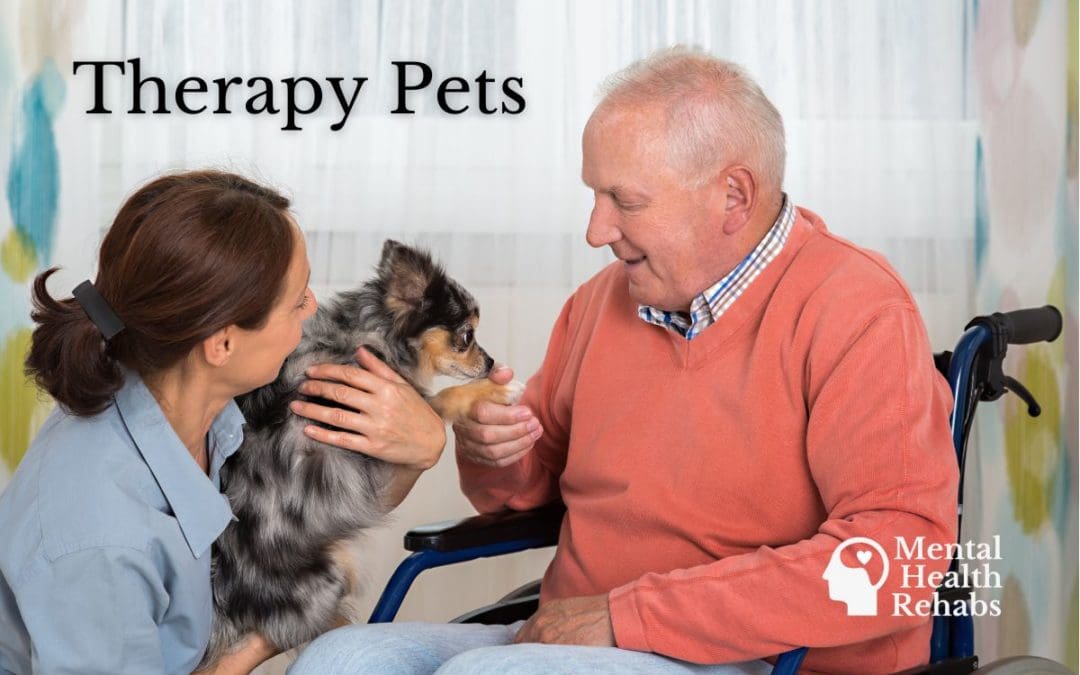Animals can bring out the best of us, helping us to be more compassionate and patient people. They can also accomplish things that medicine alone sometimes cannot, making us healthier both physically and mentally. The latter has seen substantial benefits of animal companionship. Therapy pets are now commonly used to help treat mental illnesses like anxiety, depression, and even dementia. Whether it’s a dog, cat, horse, or an emotional support peacock, animals of seemingly all types have this remarkable ability to help with mental health issues.
What is a therapy pet?
While all pets may provide therapeutic benefits to their owners, therapy pets (which may also be referred to as therapy animals) are the animals that are taken to places like hospitals and nursing homes as a part of pet therapy. Therapy pets are well-trained social animals, with great dispositions, and love meeting new people. Some of the most common animals used as therapy pets are:
- Dogs
- Cats
- Guinea pigs
- Horses
- Potbellied pigs
- Dolphins
Therapy pets are popular in assisting vulnerable populations such as veterans, senior citizens, children, and special needs individuals.
Therapy Pets vs Service Animals
Although both therapy pets and service animals can be beneficial to the humans they interact with, they are not the same thing. Service animals are specially trained to assist people with disabilities, be they physical, psychological, intellectual, or sensory. Unlike therapy pets, service dogs are not considered pets. They are highly trained to recognize specific cues or perform specific functions that are directly related to their owner’s needs.
Further, whereas others are encouraged to give attention to therapy pets, petting service animals are off-limits. This can distract them from their duties towards their disabled owner and can interfere with that person’s safety.
Types of Pet Therapy
Pet therapy can take different forms which essentially determine whether the animal goes to the patient or if the patient goes to the animal. These three basic types are therapeutic visitation, animal-assisted therapy, or facility therapy.
Therapeutic Visitation
The most common form of pet therapy. These are household pets owned by regular people that are taken to a location. Therapy animals aren’t limited to hospitals or nursing homes, however. Therapeutic visitations can also take place in detention centers or schools.
Animal-Assisted Therapy (AAT)
In animal-assisted therapy, animals are specially trained to accompany (typically) physical and occupational therapists. These animals are a key part of their sessions with clients, as interacting with the animal can improve motor function.
Facility Therapy
Facility therapy is when animals reside at the place of care and act somewhat like live-in service animals to multiple residents. These types of therapy pets are most common in nursing homes and are managed by a member of the staff.
Benefits of Therapy Pets
Although the healing power of animals has long been known by civilization (some of the earliest known examples are from the Middle Ages), this relationship wasn’t formally recognized until the 1960s by psychologist Boris Levinson. He observed that his dog’s presence improved sessions with his patients: increased communication, openness, and self-esteem.
However, there were even earlier proponents of animals being used to help patients. Sigmund Freud in the 1930s was a major proponent and frequently included his dog in patient sessions.
Since then, more research has gone into therapy pets for anxiety, depression, autism, ADHD, and other conditions. Studies have found that animal interactions can decrease cortisol levels, blood pressure, and even delay the progression of dementia.
Other key psychological benefits of therapy pets include:
- Improved verbal communication and social skills
- Lower anxiety and depression symptoms
- Elevated mood
- Increased confidence
- Reduced negative emotions such as sadness, anger, loneliness, or insecurity
- Reduced pain
It’s believed that these benefits are possible because animals are highly attentive and non-judgemental. Eye contact and physical contact between an animal and a patient can foster a positive healing environment where people feel safe and happy.
Disadvantages of Pet Therapy
It’s hard to imagine that anyone wouldn’t be better off having interacted with a sweet four-legged friend, but pet therapy isn’t necessarily for everyone. The biggest concerns about bringing animals into places like hospitals are sanitation and safety.
While therapy pets are required to be well-groomed, vaccinated, and trained, even the best-behaved dog could pose a danger to a patient with a dangerous allergy. A child who’s unfamiliar with interacting with animals could unintentionally provoke an animal to have an undesired response. Additionally, individuals with weak immune systems could find it risky to be around an animal.
Lastly, pet therapy isn’t going to have any of the usual benefits if a person doesn’t like animals to begin with. The interaction could end up being more stressful than relaxing depending on their comfort level with a particular species.

